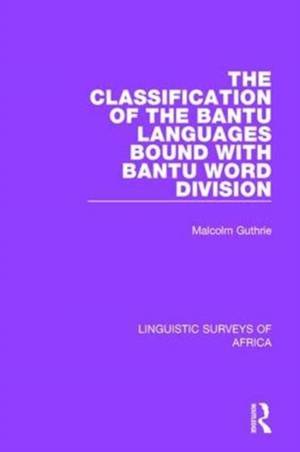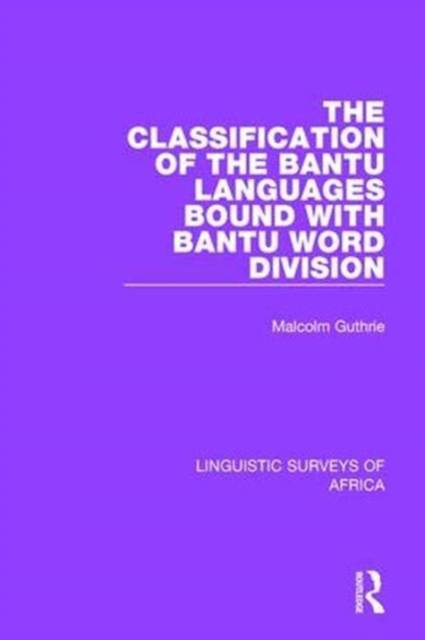
- Afhalen na 1 uur in een winkel met voorraad
- Gratis thuislevering in België vanaf € 30
- Ruim aanbod met 7 miljoen producten
- Afhalen na 1 uur in een winkel met voorraad
- Gratis thuislevering in België vanaf € 30
- Ruim aanbod met 7 miljoen producten
The Classification of the Bantu Languages bound with Bantu Word Division
Malcolm GuthrieOmschrijving
The first volume of this pair, The Classification of Bantu Languages, originally published in 1948, investigates the questions arising out of the use of the term Bantu. It establishes and illustrates the criteria used in identifying languages as members of the Bantu family. The technique used in classification is described and its results shown in the form of a series of descriptive classifications of each of the principal areas. As well as the map (not included in the volume due to modern methods of reproduction, but available to view on routledge.com), there is a complete list of languages classified in their groups. The second volume, Bantu Word Division published in the same year, discusses a question which for many years was the subject of protracted controversy, namely the dispute between the conjunctivist and the disjunctivist, with regard to word division. This pamphlet discusses word division from a different angle, and solves the problem in a more conclusive way.
Specificaties
Betrokkenen
- Auteur(s):
- Uitgeverij:
Inhoud
- Aantal bladzijden:
- 122
- Taal:
- Engels
- Reeks:
- Reeksnummer:
- nr. 11
Eigenschappen
- Productcode (EAN):
- 9781138095854
- Verschijningsdatum:
- 24/09/2019
- Uitvoering:
- Paperback
- Formaat:
- Trade paperback (VS)
- Afmetingen:
- 156 mm x 234 mm
- Gewicht:
- 190 g

Alleen bij Standaard Boekhandel
Beoordelingen
We publiceren alleen reviews die voldoen aan de voorwaarden voor reviews. Bekijk onze voorwaarden voor reviews.








